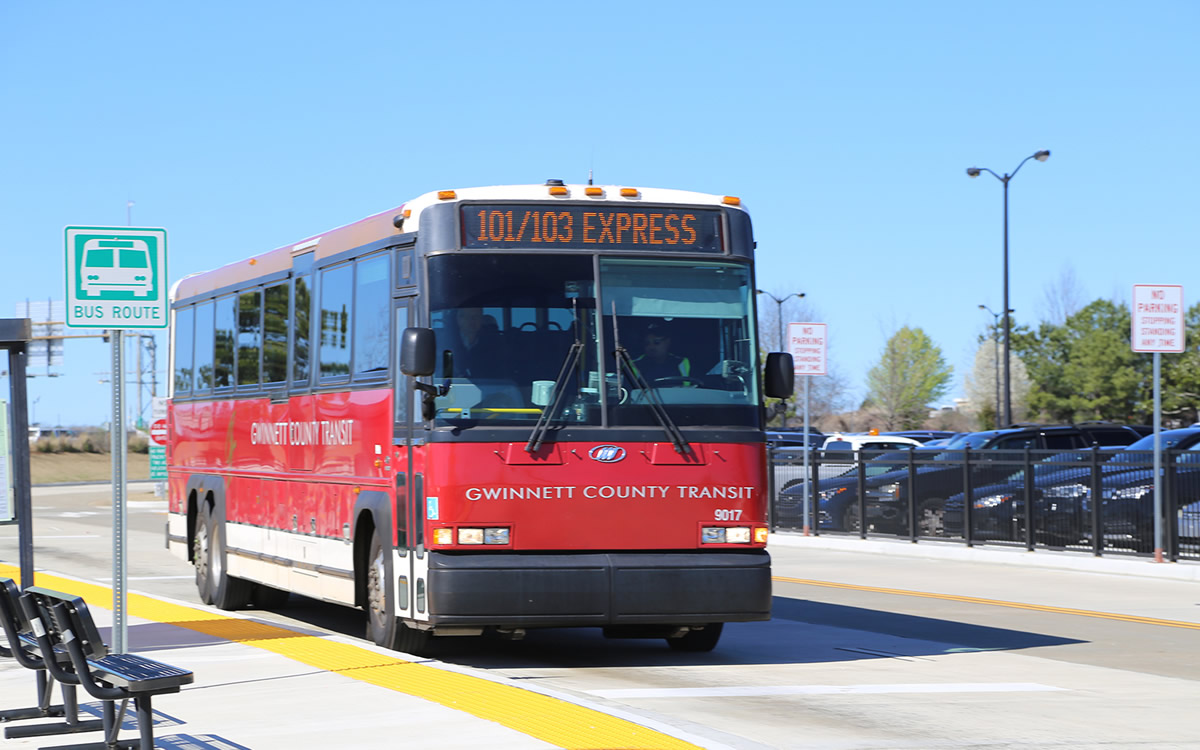By Elliott Brack
Editor and Publisher, GwinnettForum
OCT. 20, 2023 | Gwinnett County voters have about a year, until November 2024, to mull over the new Transit Plan presented by the county.
![]() The plan is a major departure from previous transit ideas that the county has urged.
The plan is a major departure from previous transit ideas that the county has urged.
The major different aspect is that the 2023 plan calls for no ties to the Metropolitan Atlanta Rapid Transit Authority (MARTA) and heavy rail in the county. There are big reasons for that. First, voters have rejected previous plans, many on the basis of not wanting to give the Authority money from Gwinnett to spend on an area-wide system. And secondly, it costs far more to build heavy rail today than when MARTA was first proposed.
We’ve learned that there is another major change in the current Transit Plan.
When the Georgia Legislature first passed the possibility that local communities could charge a one-cent sales tax for special purposes, and later on, for education, such bills would be only for a maximum of five years. After that term was over, the government would have to give taxpayers another vote to enable another special purpose sales tax, again no longer than five years.
Now counties can call for a vote on a transit sales tax which can be voted on for periods of up to 30 years. After all, major transit infrastructure for the county will cost significant dollars. The longer collection time guarantees far more sales tax monies and makes funding big long term dollars financially feasible.
How much? The county figures the Transit Plan will cost $17 billion.
Now for an admission. When calculating previous year’s county one-cent sales tax collections, we rounded that figure for 30 years and came up with $70 billion dollars. But we made a tiny error! We mistakenly placed a decimal point, rounding off what we had as $69 billion into $70 billion instead of what should have been $6.9 billon. Yep, significant difference.
Talking with Gwinnett Transportation Department Director Lewis Cooksey, we learned how they came up with the $17 billion figure.
Multiply the present annual sales tax collection for the county, $217 million, times 30 years…..then add in a 3.5 percent growth factor, bringing the total to $12.4 billion. Then put in what is anticipated to be state and federal transportation grants, and the county and its planners come to the $17 billion total.
So what will this big potful of money mean to the county?
Cooksey says that 90 percent of what is in the Transit Plan will be in place in the first 10 years of the proposed plan. Additional micro-transit operations will come first, so that almost all of the county will have this significant innovative service relatively soon. This service will relieve many Gwinnettians without their own means of transportation, and be quite an improvement for those now without means of getting around the county.
Though the plan as presented doesn’t highlight it, next in line for major expansion will be Bus Rapid Transit (BRT) serving major portions of the key thoroughfares of the county. This will operate much like a train, with dedicated lanes for these buses, run frequently and have passenger stations. It’s anticipated that BRT will move significant droves of people, often to connect with other services, including MARTA stations.
A new transit element, called Quick Line, will serve sensitive transit areas, again moving people faster than a normal bus service.
Over the next year, Gwinnett voters should educate themselves on the elements of the transit plan, so that they can understand the plan’s possibilities, and move people around easier.
This can improve Gwinnett far into its future.
- Have a comment? Send to: elliott@brack.net











Follow Us